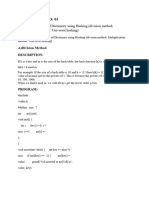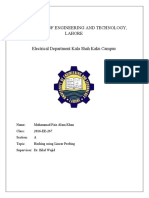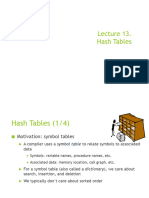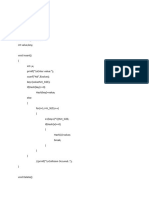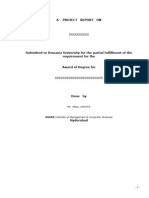0% found this document useful (0 votes)
14 views4 pagesHashing in Simple Terms
Hashing is a method for organizing data using a hash function to quickly locate items, similar to finding books on a shelf. Basic operations include inserting, searching, and deleting items, with collision handling techniques such as chaining and linear probing. The document also provides a C code implementation of a hash table using chaining to manage collisions, along with explanations of the hash function, insertion, search, deletion, and display operations.
Uploaded by
ananya sCopyright
© © All Rights Reserved
We take content rights seriously. If you suspect this is your content, claim it here.
Available Formats
Download as DOCX, PDF, TXT or read online on Scribd
0% found this document useful (0 votes)
14 views4 pagesHashing in Simple Terms
Hashing is a method for organizing data using a hash function to quickly locate items, similar to finding books on a shelf. Basic operations include inserting, searching, and deleting items, with collision handling techniques such as chaining and linear probing. The document also provides a C code implementation of a hash table using chaining to manage collisions, along with explanations of the hash function, insertion, search, deletion, and display operations.
Uploaded by
ananya sCopyright
© © All Rights Reserved
We take content rights seriously. If you suspect this is your content, claim it here.
Available Formats
Download as DOCX, PDF, TXT or read online on Scribd
/ 4





















